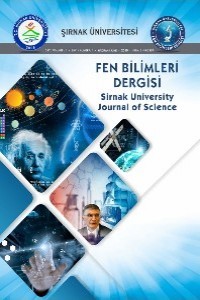Abstract
İklim değişikliği dünyada ve ülkemizde gelecekte ciddi bir problemdir, Artan dünya nüfusunun gelecekte yeterli beslenebilmesini sağlamanın yollarından biri, kurak koşullara dayanıklı bitki tür ve çeşitlerinin kullanılarak geliştirilmesidir. Açık ve örtü altı yetiştiriciliğinde en çok üretilen ve insanlar tarafından en çok tüketilen sebze türü domatestir. Kuraklığa toleranslı çeşitlerin geliştirilmesi önem taşımaktadır. Bu yüzden geçmiş yıllardan beri, kurak stresi altında yüksek verim ve kalite oluşturabilen kuraklığa toleranslı domates üretilmesi önemli hedeflerdendir. Burada sunulan proje, 2 farklı domates genotipinde, 3 farklı sulama seviyesinde (%100, %50 ve %25 ) ve 5 farklı dozda gümüş-Ag nanopartiküller (Ag-NPs) (0, 25, 50, 75 ve 100) mg L-1(ppm) kullanılarak domates bitkisinde büyüme, gelişme, ürün verimliliği ve domates meyvesinde kalite özelliklerinin incelenmesidir. Domates genotiplerinde Ag-nanopartiküllerin hangi seviyesinin bitki üzerindeki kurak stresi etkilerini azalttığı, fizyolojik ve morfolojik olarak ortaya çıkarılırken, Ag-nanopartiküllerin verim ve meyve kalite özellikleri üzerine etkileri de değerlendirilmiştir. Bu projenin pratikte üreticilerin hemen kullanabilecekleri kısa vadeli bir amacı bulunmaktadır; domates yetiştiriciliğinde özellikle kurak bölgelerde Ag-nanopartiküller ppm bazında kullanılarak bitkinin kuraklığa dayanıklılık sağlaması, verim azalmadan kaliteli domates meyveleri üretebilmektedir.
References
- Anonim, 2008, Food Safety Authority Of Ireland, (2008), Relevance For Food Safety Of Applications Of Nanotechnology, In The Food And Feed Industry,http://www,fsai,ie/publications/reports/,
- Dhanda, SS. Sethı, GS. (2002). Tolerance to drought stress among selected ındian wheat cultivars. Journal of Agricultural Science. 139: 319–326.
- Gardea-Torresdey, J. Gomez, LE. Peralta-Videa, JR. Parsons, JG. Troiani, H. & Jose-Yacaman, M. (2003). “Alfalfa sprouts: a natural source for the synthesis of silver nanoparticles.”Langmuir, vol, 19, no, 4, pp, 1357–1361.
- Kumari, M. Mukherjee, A. Chandrasekaran, N. (2009). Genotoxicity of silver nanoparticles in Allium cepa. Science Total Environment, 407: 5243- 5246.
- Latif, F. Ullah, F. Mehmood, S. Khattak, A. Khan, AU. Khan, S. & Husain I. (2016). Effects of salicylic acid on growth and accumulation of phenolics in Zea mays L. under drought stress. Acta Agriculturae Scandinavica. Section B—Soil & Plant Science. 66(4): 325-332.
- Levıtt, J. (1980). Responses of Plants to Environmental Stresses, Vol 1, Academic Press, New York.
- Levard, C. Hotze, EM. Lowry, GV. Brown, Jr. & G.E.(2012). Environmental transformations of silver nanoparticles: impact on stability and toxicity. Environmental science & technology. 46(13): 6900-6914.
- Lee, WM. Kwak, JI. & An, YJ. (2012). Effect of silver nanoparticles in crop plants Phaseolusradiatus and Sorghum bicolor: media effect on phytotoxicity. Chemosphere, 86:491-499.
- Lima, ALS. Damatta, FM. Pinheiro, HA. Totola, MR & Loureiro, ME. (2002), “Photochemical responses and oxidative stress in two clones of Coffea canephora under water deficit conditions”, Environ, Exp, Bot, 47: 239-247.
- Patane, C. Tringali, S. & Sortino, O. (2011). Effects of deficit irrigation on biomass,yield, water productivity and fruit quality of processing tomato undersemi-arid Mediterranean climate conditions. Sci. Hortic. 129: 590–596.
- Qian, H. Peng, X. Han, X. Ren, J. Sun, L. & Zhengwei, F. (2013). Comparison of the toxicity of silver nanoparticles and silver ions on the growth of terrestrial plant model Arabidopsis thaliana. Journal of Environmental Science, 25:1947-1956.
- Rai, M. Yadav, A. & Gade, A. (2009). Silver nanoparticles as anewgeneration of antimicrobials, Biotechnol, Adv, 27:76–83
- Savithramma, N. Rao, ML. Rukmini, K. & Devi, PS. (2011).“Antimicrobial activity of silver nanoparticles synthesized by using medicinal plants,”International Journal of ChemTechResearch. vol, 3, no, 3, pp, 1394–1402.
- Solfanelli, C. Poggi, A. Loreti, E. Alpi, A. & Perata, P. (2006). Sucrosespecific induction of the anthocyanin biosynthetic pathway in Arabidopsis. Plant Physiology, 140(2):637–646.
- Wild, A. (2003). Soils, land and food : managing the land during the twenty-first century, Cambridge University Press, Cambridge.
- Winkel-Shirley, B.(2002). Biosynthesis of flavonoids and effects of stress. Current Opinion in Plant Biology. 5(3):218–223.
Details
| Primary Language | Turkish |
|---|---|
| Journal Section | Articles |
| Authors | |
| Publication Date | July 9, 2021 |
| Submission Date | April 27, 2021 |
| Acceptance Date | June 28, 2021 |
| Published in Issue | Year 2021 Volume: 2 Issue: 1 |
Sirnak University Journal of Science licensed under a Creative Commons Attribution-NonCommercial-Non-Derivatives 4.0 International Licence (CC BY-NC-ND 4.0).

